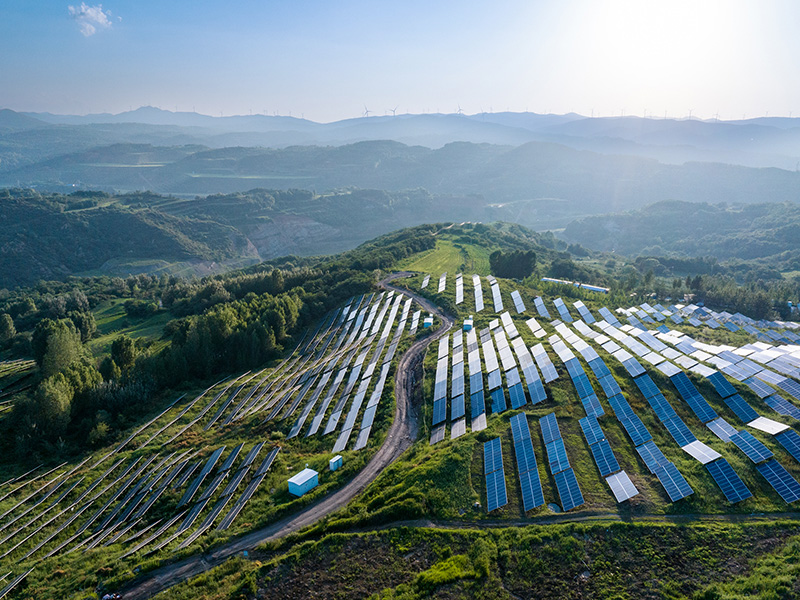
Photo by Jennifer Sanerkin on iStock
Authors
-
Beth Richmond
Former Director, Transformation, BSR
-

Director, Sustainable Futures Lab, BSR
-

Associate Director, Transformation, BSR
Key Points
- The world has experienced profound changes since many companies established their sustainability commitments for 2025 and 2030; the COVID-19 pandemic, wars in Ukraine and Gaza, and increased volatility due to inflation and high-interest rates have significantly reshaped operating environments.
- Intensifying climate impact, explosive growth in AI, the evolving regulatory landscape and increasingly polarized stakeholder demands are all influencing how companies consider and communicate their sustainability goals and targets.
- In considering what comes next, companies should leverage a robust process that pairs strategic foresight and visionary thinking with concrete near-term targets and strong operational planning.
- Clarity of purpose and robust stakeholder engagement are more important than ever in developing goals that will stand the test of time.
Sustainability goals are naturally rooted in long-term ambition. It is not uncommon for companies to set goals 5-10 years in advance or, in the case of climate goals, even longer. Given this long time horizon, they are often pegged to major global frameworks, such as the Sustainable Development Goals or net zero goals for 2030, 2040 and 2050.
BSR research on members indicated that roughly 35 percent of time-bound goals expire in 2025, and another 40 percent are pegged to 2030. As 2025 goals reach their expiration date and we evaluate progress toward those 2030 commitments, it’s time for many companies to reflect on what they’ve learned and start thinking about what’s next. It’s clear that much has changed since the last time companies undertook this exercise. As we lay out in more detail below, the 2020s have been disruptive, and goals set before 2020 need updating to reflect a new reality and fresh vision.
The key question is: How can companies seize this moment to develop a set of goals that are ambitious, credible, and flexible enough to be fit for the future?
What are the key trends and disruptions impacting goals?
Many of the goals set to expire were developed in or before 2020. A great deal has changed since then, as the world experienced the COVID-19 pandemic, wars in Ukraine and Gaza, all amidst a macroeconomic context of inflation and high interest rates. And we should prepare for still more turbulence and change to come. As we look ahead, we need to consider four key trends that will further reshape the operating context for business in the next few years.
Intensifying climate impacts bring new levels of disruption.
We have seen to operations and value chains, threatening people, infrastructure, and the availability of raw materials. In the World Economic Forum's 2024 Global Risks Report, extreme weather topped the list of risks that leaders believe could present a material crisis on a global scale. With progress on emissions reductions still insufficient to meet the challenge of keeping global warming within a 1.5°C limit, stakeholders—including regulators—are strengthening their calls to action. As companies revisit their climate goals, our guidance is to plan the energy transition in line with science, gear up adaptation and nature efforts, and to put justice and equity at the center of our efforts.
Explosive growth in AI capabilities is poised to change how we work.
It may significantly accelerate progress in scientific research and resource efficiency, and it may also pose risks to privacy, human rights, and livelihoods. As companies review and refresh goals, it will be important to closely monitor and understand these different possibilities, as well as the nascent efforts to regulate this technology.
Growing geopolitical tensions and regional conflicts are disrupting supply chains.
Trade policy and regulations, human rights, and the energy transition are increasingly refracted through a geopolitical lens. Meanwhile, concerns are rising about the potential for new conflicts. As we enter a season of global elections, leadership changes could result in additional geopolitical volatility. Strategic foresight techniques like scenario planning can help companies chart more resilient pathways towards achieving supply chain, sourcing-related goals, and energy transition goals.
The fast-changing regulatory environment is a critical consideration.
While new requirements like mandatory disclosure and due diligence may sometimes feel like an onerous compliance exercise, new laws and regulation like the EU’s Corporate Sustainability Reporting and Corporate Sustainability Due Diligence Directives are a game-changer for sustainable business. The transition from voluntary to mandatory action is raising the floor for corporate performance and disclosure on a range of sustainability topics, and as such can be a strong foundation for goal-setting efforts.
Of course, all these challenges are interconnected. As our understanding of these complex issues deepens and cross-cutting regulatory requirements proliferate, the connection between traditionally siloed sustainability topics is likely to become more prominent and pressing. These interdependencies and reinforcements will need to be reflected in goals that are cross-cutting and holistic. Responsibility for implementation will need to move beyond the historical E, S and G divide.
With all of this in play, how can companies best navigate?
At BSR, we continue to believe that there are several elements that, when taken together, result in ambitious but credible goals: clear priorities, strong understanding of context, and focus on long-term impact.
Focus carefully. Companies need to undertake sustainability due diligence to understand where impacts lie across the full value chain, how the business is connected to the impacts, how they’re governed and managed, and what more they can do to address harms. A double materiality assessment can further help to identify and rigorously prioritize potential business risks and opportunities over the short-, medium-, and long-term. While all impacts, risks, and opportunities should be monitored and managed, when it comes to goal setting, the aim of these efforts should be to surface a handful of focus areas where the company can truly have the most significant impact.
It is also important to consider how actions on selected focus areas will align with a company’s mission and values. Achieving ambitious, long-term goals requires the management of a complex array of thorny challenges. When companies face headwinds like the “ESG backlash” in the US and economic uncertainty, goals that feel misaligned with the core business will start to feel arbitrary and non-essential. Selecting focus areas with goals that clearly connect to mission and values will help ensure commitments remain relevant over time.
Build an inclusive process. Companies are most likely to achieve goals with strong buy-in from stakeholders, which can either be secured or severely undermined in the goal development process. A smart stakeholder engagement strategy enables diversity of thought, opportunities for co-creation, a clear-eyed view of potential operational challenges, and insights into stakeholder perceptions. It is important that companies consult both internal and external stakeholders, and where possible, engage directly with affected stakeholders.
There are a range of ways to do this in practice. As a starting point, companies can review documentation of prior engagements. They can conduct dedicated interviews, focus groups, and surveys to collect input or feedback on draft goals. They can also integrate discussions into ongoing stakeholder engagement efforts like established stakeholder advisory councils. The right solution will look different for each organization based on its existing relationships, governance structures, and logistical considerations, but the inclusion of diverse stakeholder viewpoints should always be an important priority.
Leverage futures thinking. Goals reflect our assumptions and aspirations about the future. If you have not explicitly considered how the world is changing, then you risk creating goals that are well-suited for today but will be seriously outdated a couple of years from now.
Although it's impossible to fully predict the future, strategic foresight offers us structured ways to think about the future and can help inform goals that are more robust, resilient, and ambitious.
Trends analysis can be used to anticipate how the world is likely to change and to identify the likely headwinds and tailwinds for a company's sustainability efforts. Integrating a perspective on relevant trends such as those mentioned above should be considered a fundamental ingredient for a robust sustainability strategy and goals.
In conditions of high uncertainty, such as those surrounding political shifts, scenario analysis offers a tool to increase resilience by stress-testing strategies and goals against multiple different versions of the future.
Finally, futures techniques like Three Horizons can serve to articulate ambitious visions and goals that support the deep transformation that is needed.
Whether you are refreshing your goals or overhauling your overall vision and strategy, creating credible and ambitious goals requires a robust process that is both future-orientated and grounded in operational realities. We look forward to supporting businesses to do this as we look beyond 2025. Please feel free to connect with our Futures Lab and Sustainability Management teams to learn more.
BSR’s latest sustainability insights and events straight to your inbox.
Topics
Let’s talk about how BSR can help you to transform your business and achieve your sustainability goals.







